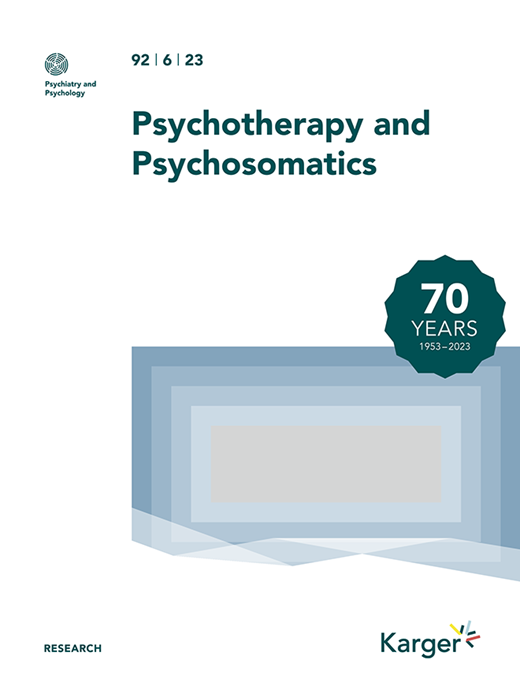接受与承诺治疗对自杀与自残的疗效:系统回顾与元分析。
IF 17.4
1区 医学
Q1 PSYCHIATRY
引用次数: 0
摘要
自残思想和行为(sitb)是世界范围内主要的公共卫生问题。近年来,有越来越多的研究探讨了接受和承诺疗法(ACT)在sitb中的应用。本研究系统回顾和荟萃分析了ACT在减少sitb方面的有效性。方法系统检索6个数据库,查阅相关文献。研究探讨了ACT与对照条件在减少sitb方面的有效性。使用随机效应模型的Hedges' g计算效应量。还进行了亚组分析和meta回归。结果本综述共纳入48项研究(N = 4719)。结果表明,ACT治疗后在减轻自杀意念(g = -0.64)、自杀企图(g = -0.66)、自我伤害(g = -1.53)、非自杀性自我伤害(g = -0.59)和总体sitb (g = -0.99)方面优于对照组。此外,ACT在减少自杀意念(g = -2.15)、非自杀性自伤(g = -1.18)和总体sitb (g = -1.52)方面也有效。主持人分析显示,当以小组形式或在东方国家进行时,ACT在减轻自杀意念方面更成功。同样,在东方国家进行的研究,或采用直接干预措施的研究,报告在解决总体sitb方面更有效。结论:本综述强调了ACT在减少sitb方面的有效性,并表明它可能是sitb标准治疗的一种有希望的替代策略。需要更多高质量和大规模的随机对照试验来证实我们的发现。本文章由计算机程序翻译,如有差异,请以英文原文为准。
Efficacy of Acceptance and Commitment Therapy for Suicide and Self-harm: A Systematic Review and Meta-analysis.
INTRODUCTION
Self-injurious thoughts and behaviors (SITBs) are major public health issues worldwide. In recent years, there has been a growing body of research investigating the application of acceptance and commitment therapy (ACT) for SITBs. This study systematically reviews and meta-analyzes the effectiveness of ACT in reducing SITBs.
METHODS
We systematically searched six databases and examined the reference lists of relevant studies. Studies that explored the effectiveness of ACT versus control conditions for reducing SITBs were included. Effect sizes were calculated using Hedges' g with the random effect model. Subgroup analyses and meta-regression were also performed.
RESULTS
A total of 48 studies (N = 4,719) were included in this review. The results indicated that ACT outperformed control conditions in alleviating suicide ideation (g = -0.64), suicide attempt (g = -0.66), self-harm (g = -1.53), non-suicidal self-injury (g = -0.59), and overall SITBs (g = -0.99) at post-treatment. Also, ACT was effective in reducing suicide ideation (g = -2.15), non-suicidal self-injury (g = -1.18), and overall SITBs (g = -1.52) at follow-up. Moderator analyses revealed that ACT was more successful in mitigating suicide ideation when delivered in a group format or in Eastern countries. Similarly, studies conducted in Eastern countries, or those employing direct interventions, reported greater efficacy in addressing overall SITBs.
CONCLUSION
This review highlights the effectiveness of ACT in reducing SITBs and suggests that it may serve as a promising alternative strategy to standard treatment for SITBs. More high-quality and large-scale randomized controlled trials are required to substantiate our findings.
求助全文
通过发布文献求助,成功后即可免费获取论文全文。
去求助
来源期刊

Psychotherapy and Psychosomatics
医学-精神病学
CiteScore
29.40
自引率
6.10%
发文量
46
期刊介绍:
Psychotherapy and Psychosomatics is a reputable journal that has been published since 1953. Over the years, it has gained recognition for its independence, originality, and methodological rigor. The journal has been at the forefront of research in psychosomatic medicine, psychotherapy research, and psychopharmacology, and has contributed to the development of new lines of research in these areas. It is now ranked among the world's most cited journals in the field.
As the official journal of the International College of Psychosomatic Medicine and the World Federation for Psychotherapy, Psychotherapy and Psychosomatics serves as a platform for discussing current and controversial issues and showcasing innovations in assessment and treatment. It offers a unique forum for cutting-edge thinking at the intersection of medical and behavioral sciences, catering to both practicing clinicians and researchers.
The journal is indexed in various databases and platforms such as PubMed, MEDLINE, Web of Science, Science Citation Index, Social Sciences Citation Index, Science Citation Index Expanded, BIOSIS Previews, Google Scholar, Academic Search, and Health Research Premium Collection, among others.
 求助内容:
求助内容: 应助结果提醒方式:
应助结果提醒方式:


